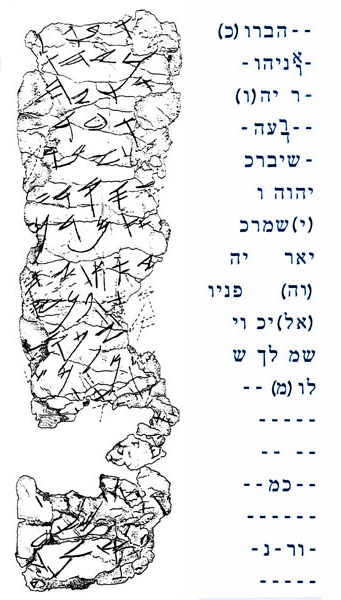Ketef Hinnom Scrolls
The Ketef Hinnom scrolls, also referred to as the silver scrolls, were discovered southwest of Jerusalem in 1979. They are two tiny scrolls that were probably placed in an amulet worn around the neck. Both contain biblical text, and the smallest is inscribed with a passage from Numbers 6:24-26. They are the oldest manuscripts of the Bible currently available dating to 650-587 B.C.

These scrolls are a testament to the authenticity and historicity of the Bible. They contain excerpts from the Biblical text as indicated below.
KF 1 (larger scroll)

- …) YHW …
- (…)
- the grea(t … who keeps)
- the covenant and
- (G)raciousness towards those who love (him) and (alt: (hi)m;)
- those who keep (his commandments …
- …).
- the Eternal? (…).
- (the?) blessing more than any
- (sna)re and more than Evil.
- For redemption is in him.
- For YHWH
- is our restorer (and)
- May YHWH bles(s)
- you and
- (may he) keep you.
- (May) YHWH make
- (his face) shine …
When we examine the translation of lines 3-6 on KF1, they are directly related to Exodus 20:5-6 and Deu. 5:10; 7:9 that say God keeps His covenant and shows mercy toward those who love Him and keep His commandments
KF2 (smaller scroll)

- -h/hu. May be blessed h/sh-
- -(e) by YHW(H,)
- the warrior/helper and
- the rebuker of
- (E)vil: May bless you,
- YHWH,
- keep you.
- Make shine, YH-
- -(W)H, His face
- (upon) you and g-
- -rant you p-
- -(ea)ce.
The words found on this second scroll directly relate to Numbers 6:24-26 that says, “The LORD bless you and keep you; The LORD make His face shine upon you, and be gracious to you; The LORD lift up His countenance upon you, and give you peace.”
These scrolls also reflect the transformation of the Hebrew text. What is used today is not the same script used during the time of ancient Israel. After the Babylonian invasion, the Israelites eventually went from writing Paleo-Hebrew (a form closely related to the Proto-Sinaitic script), to the form that is recognizable today. Although scribes and a few others held on to the earlier script for a time, it was completely out of use by the mid second century A.D. Since then, Hebrew has been written in what is variously termed the square script, Aramaic script, or Jewish script.